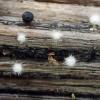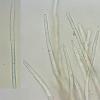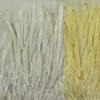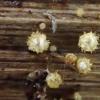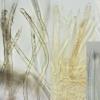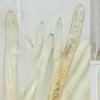
20-12-2025 23:08
Patrice TANCHAUDBonsoir, récolte sur sol sablonneux dans l'arri�

20-12-2025 15:47
Mirek GrycHi.These grew on pine wood that was heavily covere

18-12-2025 21:17
Pol DebaenstThe identification took me to Byssonectria deformi

15-12-2025 07:09
 Danny Newman
Danny Newman
indet. Rutstroemiaceae sp. on unk. fallen leavesMc

19-12-2025 10:10
Patrice TANCHAUDBonjour, récolte réalisée en milieu dunaire, a

18-12-2025 17:23
 Bruno Coué
Bruno Coué
Bonjour,je serais heureux d'avoir votre avis sur c

18-12-2025 18:07
Margot en Geert VullingsThese plumes were found on rotten wood.They strong

17-12-2025 18:35
 Michel Hairaud
Michel Hairaud
Bonjour à tous/Hi to everyone I am passing along
In the mean time I'd be happy for ideas on what it could be.

However, on the same culm there is now also another species with more yellowish hairs even if not as bright yellow as the one I have interpreted to be T. limonipilosa. The spores are 10.4 - 15.0 × 1.9 - 2.3 µm, with virtually no visible spore content. IKI faintly bluish, no croziers. Would this be T. sulphureopilosa?
These two species are very often found together.
If these are two separate species? As far as I know, work on them has not yet been completed. Zotto knows much more on this subject.
I am wondering, however, a blue reaction to iodine?
Such occurs after pre-treatment of asci in KOH.
Are you sure she was blue?
greetings
Mirek
Porus Reaction T. mollissima and T. sulphureopilosa should be red.
Maybe this species is more complex than we think?
Or maybe you have a different genre?

So do you think Stefan used IKI in a low concentration?
Using after Lugol, KOH with low concentration, I also obtained a blue reaction.
How I will find fresh ascomata, I will check more closely.
Thank you Zotto.


